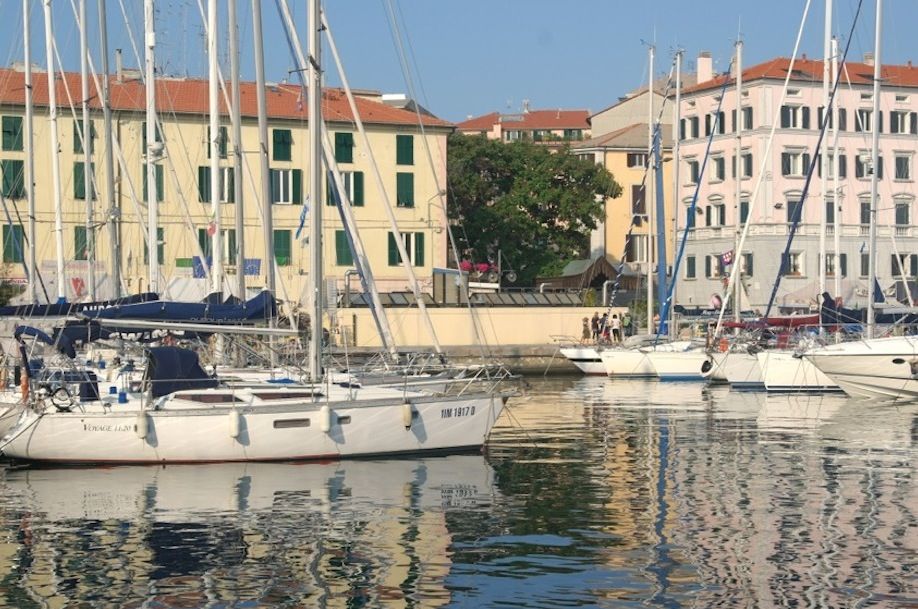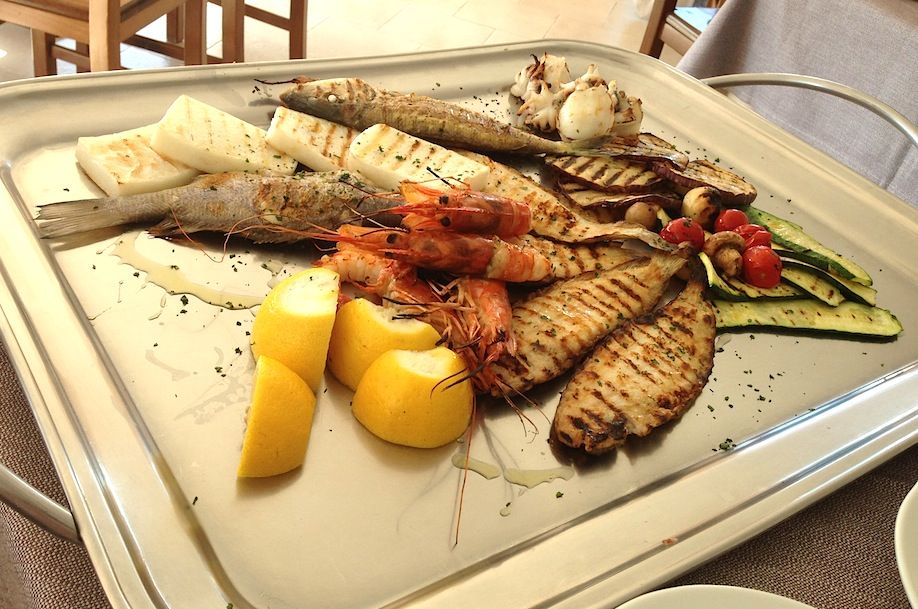
Natural afternoon light can mean that outdoor shots like this one require no editing at all.
Italy is a country of remarkable diversity, and I’ve travelled and worked here many times over the past few years. From munching delectable seafood on a Venice sidestreet to taking a Vespa ride across Rome, it doesn’t take long to fall in love with this nation. It maintains its unique culture and often ancient daily customs with a sophistication I’ve not come across anywhere else in the world.
My latest teaching trip has brought me to the coastal region of Liguria in Italy’s north, close to the French border. This laid back area is brimming with pebble beaches, clear waters and sun-kissed Italians. Although there are a number of impressive sites such as churches, galleries and museums to see in Liguria, the real attraction for visitors is the chance to gain insight into its strong local traditions.

I love taking advantage of reflections when photographing water – it’s a simple technique, but the results can be beautiful.
Savona is my home for the first two weeks of this trip. The seaport town is celebrated as the former home of navigator Christopher Columbus, who worked as a farmer here while he wrote about his adventures. Bars, cafes and restaurants can be found on every corner, and are a good spot to grab an aperitivo before dinner – a glass of local Prosecco or a Spritz Aperol, the modest two-ingredient cocktail of choice in most of Northern Italy.
The first weekend takes us 40km west to Genoa, Liguria’s capital city, which is the perfect location to explore the region’s rich gastronomy. Liguria is well-known for its pesto, and Genoa is considered the birthplace of this delicious sauce. It’s no surprise considering the surplus of (basilico) and pine nuts (pinoli) readily available in every village, town and city here.
Italians certainly know how to dress a dish for the camera – a sprinkle of fresh herbs can make all the difference to the final image.
Natural produce is on the dinner table every night, whether you’re eating at home or at a restaurant. Some Ligurian favourites include salty focaccia bread, hearty gnocchi, mushroom risotto and a plethora of seafood pasta dishes. Parmesan cheese, fresh bread and olive oil garnish every meal.
Fish is obviously a prominent ingredient in pasta, risotto, salad and soup dishes, but fruit, vegetables and herbs are of just as much important to Ligurians. Some of Liguria’s finest offerings include mushrooms (funghi), courgettes (zucchini) and tomatoes (pomodoro). It’s worth a trip to an Italian supermarket or vegetable shop just to examine the colourful, distinctive and sometimes rather strange mix of tomatoes on sale.

Some of my favourite foodie photographs are colourful; a fish and veg platter like this is full of interesting shades.
Italians do nothing with a sense of urgency, so dinner is an event that lasts at least three hours every evening, despite responsibilities like work and school to think about. It takes a little while to adjust to eating dinner at 9pm and going to bed almost straight afterwards, but the delectable food makes it worth the pasta baby you’ll inevitably wake up with.
My hosts in Sciarborasca, near the town of Cogoleto, have a small farm in the land surrounding their home, so almost every ingredient – from the wine to the olive oil to the impressive selection of fruit on the table each night – has been farmed from the fields earlier that day. The family talk about this dismissively, explaining that the majority of Ligurians, or their family members, grow their own produce. As you’d expect, dinners here are some of the best I’ve ever had in Italy.

Zoom in close on market stalls to get that perfect snap of something delicious and photogenic!
The first main course (primi piatti) of a traditional Italian dinner is carbohydrate-based, so prepare yourself for a generous helping of rice or pasta – sometimes both. The second main course (secondi piatti) consists of meat or fish cooked to perfection, accompanied by the freshest of herbs and vegetables available. Then comes a dessert of garden-fresh fruit, ice-cream (gelato) or a regional speciality such as tiramisu. It really is no wonder we’re all ready for bed by the end of our daily feast.
Lauren Razavi
About the author: Lauren Razavi is a travel journalist and a lifestyle blogger. She writes and takes photographs all over the world, and her work has been published in many of the UK’s leading national newspapers and specialist travel titles.
Website: www.laurenrazavi.com
Blogs: www.takeontheroad.com and www.liveandteach.com
Twitter: www.twitter.com/laurenrazavi
Instagram: www.instagram.com/laurenrazavi



